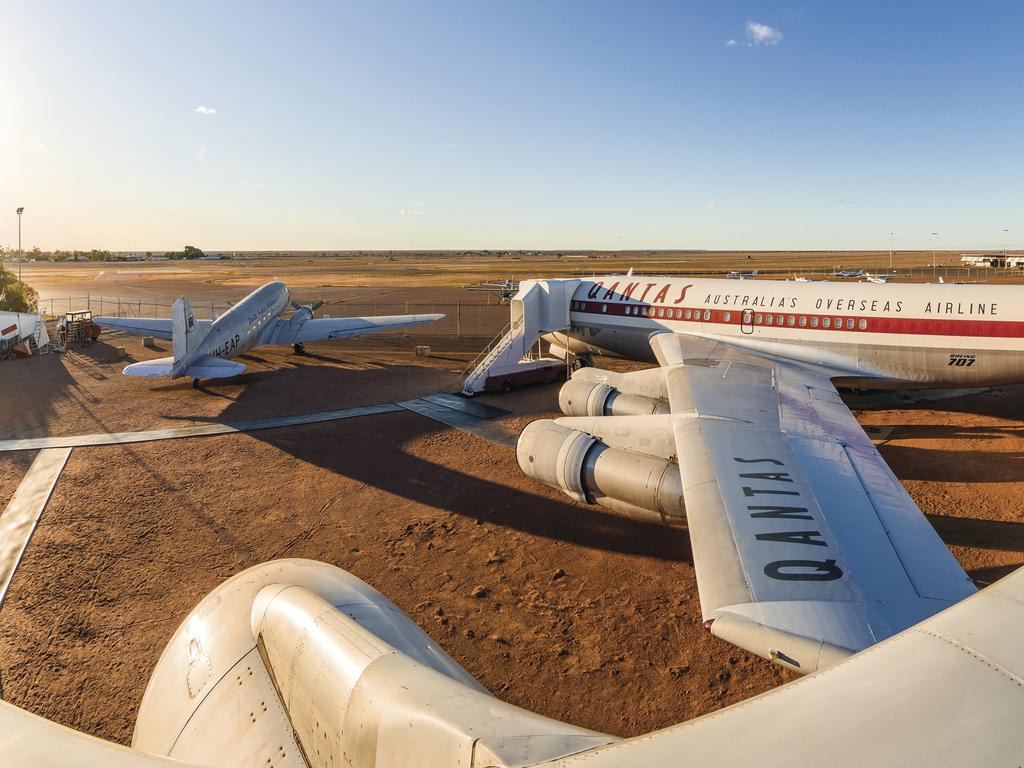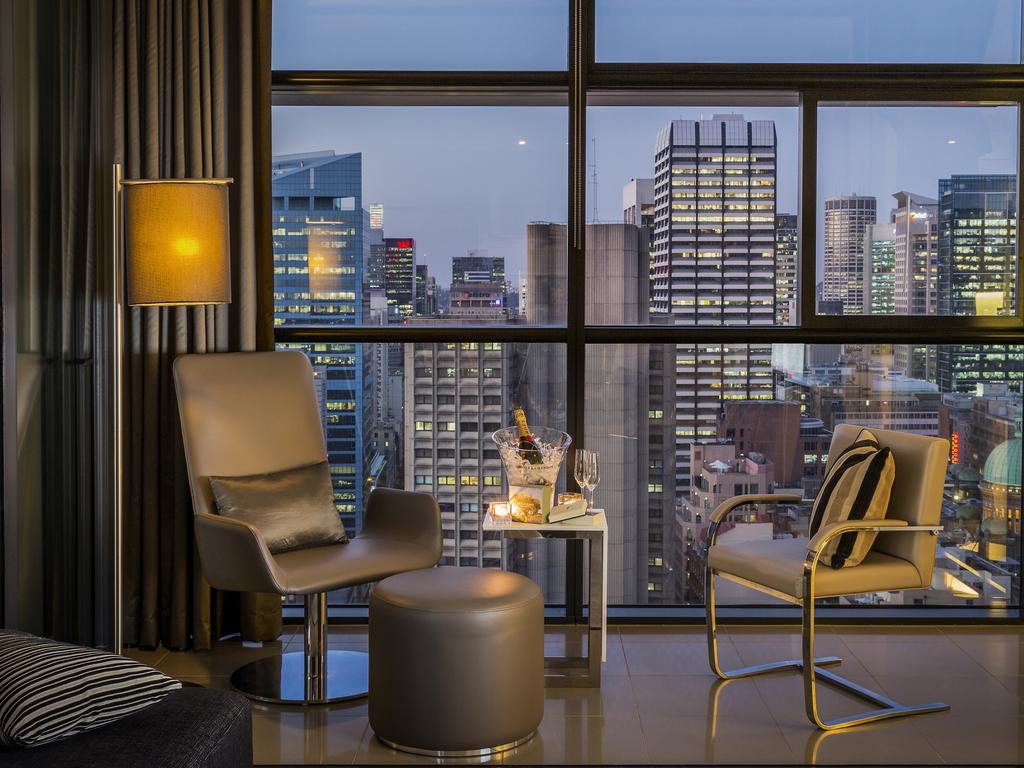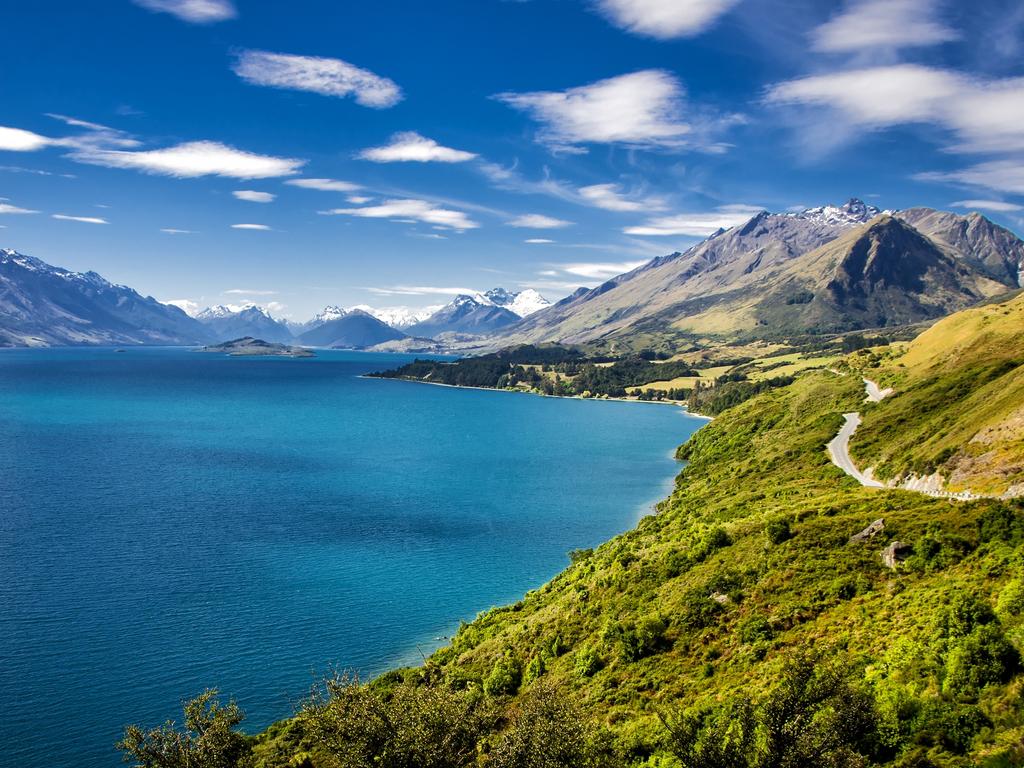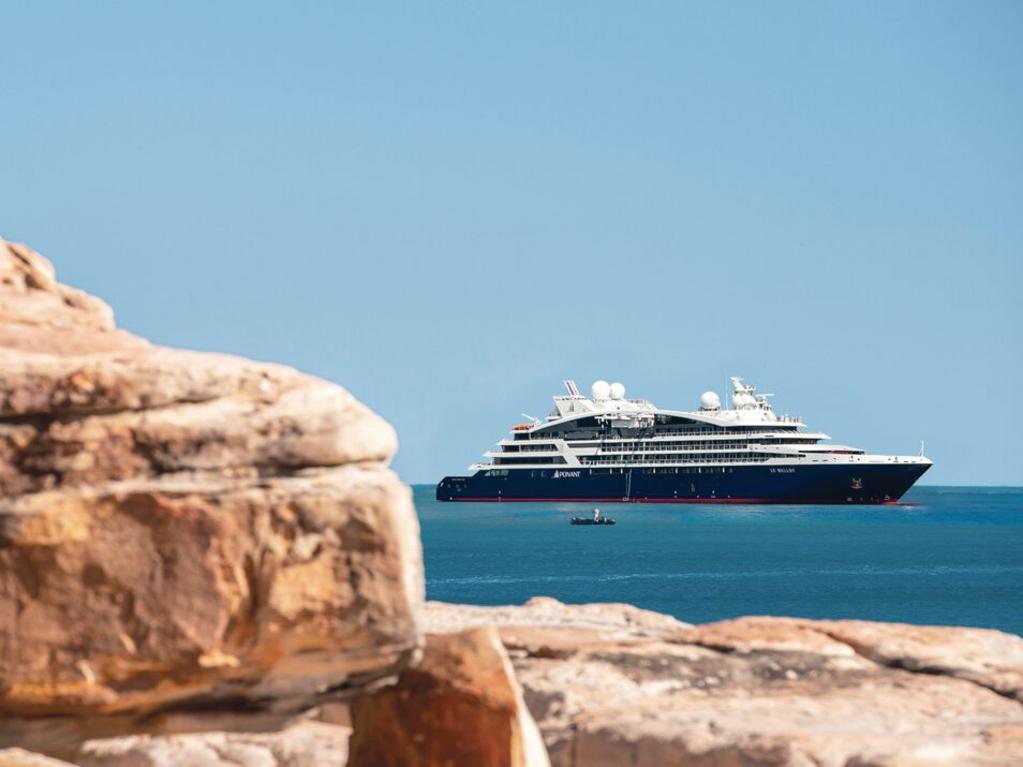Historic homes present life just like old times
Experience life as it once was at some of Australia’s best-preserved historic homes.

Saumarez Homestead, Armidale, NSW
Visitors can feel like trespassers while taking a tour of this Edwardian mansion filled with the personal possessions of the White family. The home, built between 1888 and 1906, is an astonishing time capsule, right down to the original wallpaper, rugs and eiderdowns. On a dressing table are matriarch Maggie’s hairbrush, trinket boxes and hatpins, and in the study, the only place he was allowed to smoke, are father FJ White’s tobacco pipes. Daughter Elsie’s riding boots are in the mud room and Mary’s elaborate chip work woodcarving is everywhere, on furniture that still bears David Jones stickers.
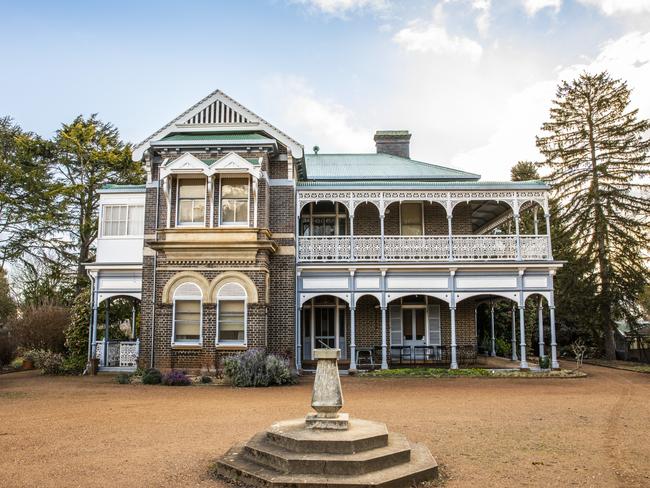
Bed sheets remain neatly folded in the linen press and a camphor chest is filled with fabulous frocks from the 1920s and 30s wrapped in tissue paper. It’s as though the Whites simply walked out and closed the door behind them, which to a certain extent they did. Elsie lived alone in the house right up until her death in 1981, and when the National Trust took ownership of it and the surrounding 10ha in 1984, one room had not seen sunlight for 60 years. The organisation has gone on to catalogue 6500 items digitally. Outside, a heritage rose garden features blooms painstakingly referenced from receipts that date back to the 1890s. Saumarez’s gardens are open this Sunday but the house remains closed.
STAY Petersons Guesthouse; petersonsguesthouse.com.au
PENNY HUNTER
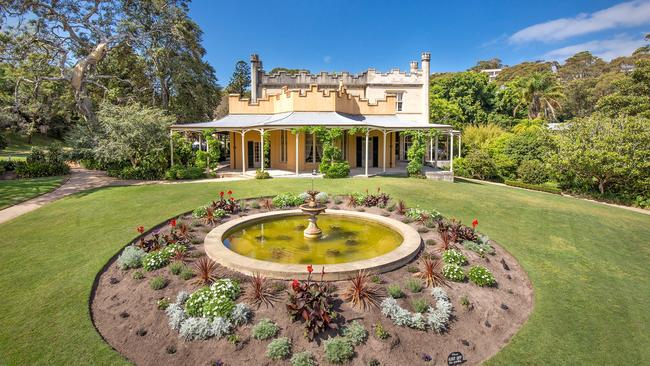
Vaucluse House, Sydney
Real estate in the NSW capital has always been about location, location, location. “There is not a lovelier site in the known world”, barrister and novelist John Lang wrote in the 1850s about the harbourside “chateau” of explorer and politician William Charles Wentworth at Vaucluse in the city’s east. Today, as well known for its parklands and tearooms, the house presents a microcosm of life in the original era, even down to heritage plantings in the kitchen parterre and orchard. But to understand it fully is to know of Wentworth’s difficult rise from his family’s convict roots to a public benefactor who was accorded NSW’s first state funeral in 1872. Visitors have had access (limited at first) since 1912 and Vaucluse House is one of Sydney’s most popular living museums. Faithfully re-created interiors are elegant rather than ostentatious, but there were just three bedrooms for 10 children and, according to the curator’s notes, the drawing room was remodelled in the 1840s with fine imported features “in the hope of impressing suitors for the Wentworth daughters”. The great public figure was never properly accepted into Sydney society but this is a house of approachable grandeur that welcomes one and all. Vaucluse House is open Wednesday to Saturday.
STAY Watsons Bay Boutique Hotel; watsonsbayhotel.com.au
SUSAN KUROSAWA
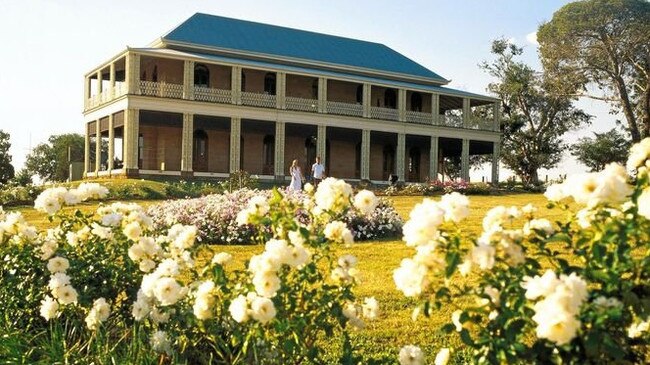
Glengallan Homestead, Darling Downs, Queensland
A haunted house on the hill that fired the imagination of young travellers on the New England Highway between Warwick and Toowoomba, Glengallan Homestead stood in ruins for much of the 20th century. The two-storey sandstone mansion with grand verandas had held social sway for a surprisingly short time. Its setting on the western slopes of the Great Dividing Range is the original Darling Downs (now a much larger region), named by explorer Allan Cunningham in 1827 and settled by squatters the Leslie brothers in 1840. The run, renowned for its merino flock, changed hands between Scottish families before John Deuchar embarked on his vision of a head-turning home (double storeys were rare) in 1867. But its significance waned from the 1920s and by 1949, after being given to the Anglican Church, the building was doomed to be dismantled for reuse at Slade School in Warwick. That idea fizzled, leaving the ghost to be given new life by University of Queensland architecture students in the 80s. Glengallan was heritage listed in 1992 and is now operated by a trust. Restoration has been steady, relying on historic photos, and descendants of original families have donated pieces that reclaim pride of place. A heritage centre serves excellent coffee and sells local produce. In summer, nearby Allora takes on van Gogh splendour with fields of sunflowers; open Wednesday to Sunday.
STAY Spicers Peak Lodge; spicersretreats.com
GRAHAM ERBACHER
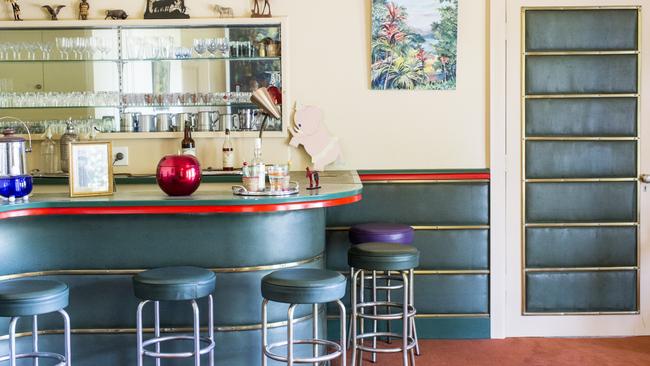
Mooramong, Victoria
This homestead could have stayed rooted in heavy Victoriana like most other west Victorian sheep station homes but for a love match that gave it an injection of Hollywood glamour. Built just outside Skipton in 1873 for pastoralist Alexander Anderson, who wanted “a well-proportioned timber house” and hedged gardens, it changed hands several times until racing identity Lauchlan Mackinnon (honoured by the LKS Mackinnon Stakes at Melbourne Cup time) bought it for his son Scobie in 1926. When, 12 years later, Scobie returned from England with a bride, Mooramong was ripe for transformation. The new Mrs Mackinnon was Claire Adams, a silent movie star and later singer who redecorated Mooramong in art deco style. Scobie and Claire threw parties for Hollywood chums around what was the largest private pool in the southern hemisphere, to the sound of the latest jazz tunes. Mooramong still oozes style. Claire’s perfumes can be found in her bedroom, a walnut Steinway graces the drawing room, and everywhere are knick-knacks themed for the animals the childless couple so adored. Mooramong, 180km west of Melbourne, is likely to reopen next year.
STAY At the property’s converted workers’ cottages, which includes use of the pool and court and a private house tour.
JEREMY BOURKE
Everglades, Leura, NSW
Belgian-born businessman Henri Van de Velde — Van to his friends — was a giant of a man. It’s one of the unexpected things you learn while poking around his moderne-style art deco home in Leura, the Garden Village of the Blue Mountains. Everglades, overlooking the bush, is famous for its Paul Sorensen-designed gardens (the Cherry Terrace is a froth of pink in spring) but the house is also a drawcard. With its historically accurate glazed golden walls and ceilings, it can feel as though you’re stepping straight into a sunburst.

On the ground floor is Van’s bathroom, complete with burnt-orange tiles, black ceramic fittings and an intriguing steambox, where the showerhead was placed dizzyingly high to accommodate Van’s 190cm frame. Wife Una’s “pure Hollywood” upstairs bathroom includes a centrepiece tiled bath where, with the door open, you could spy the blue-tinted Jamison Valley while lolling in the suds. Other highlights include the sunroom’s “bent glass” windows, the innovative concrete staircase and the whimsical dining-room food-gathering relief that depicts moments such as a fisherman snagging a mermaid. Outside, take a moment to “read” the wrought-iron courtyard screens: they tell the tale of the family’s Sealyham terrier, Buster, chasing a resident peacock before being sent to the doghouse. Everglades is open Thursday to Monday.
STAY Lilianfels Resort & Spa; lilianfels.com.au
KATRINA LOBLEY
Ellensbrook, Mokidup, Western Australia
In 1857, the year Ellensbrook, just north of Margaret River, was completed, owner and namesake Ellen Bussell described the surrounds as “a pretty hilly country by the sea where there is health in the breeze”. More than 160 years later, Ellensbrook remains largely unchanged and is managed by the National Trust. The paddocks where dairy cattle once grazed welcome visiting picnickers who might take a post-lunch wander down to Meekadarabee Falls, surrounded by peppermint trees and lush ferns, or stroll to the rocky surf beach. Made from crushed shell and limestone, the homestead has recently undergone restoration in part to highlight its Indigenous heritage. The area was a camping ground for thousands of years, known to the traditional owners, the Wardandi, as Mokidup. It was a Wardandi guide who steered the Bussells to the sheltered location, with its abundant fishing and ready supply of fresh water. Some Wardandi custodians helped build the homestead and continued to work for the family. Indigenous artist Sandra Hill was commissioned to produce a series of interpretive works on the property, telling stories of the land. These pieces play a key role in educating visitors about the history of the southwest. Ellensbrook is open Thursday to Saturday.
STAY Cape Lodge; capelodge.com.au
ANDREA BLACK

Rippon Lea Estate, Elsternwick, Victoria
Most Melburnians know Rippon Lea as a spectacular venue for weddings and extravagant parties. The sprawling 33-room Romanesque-style mansion, set in 18ha of gardens, was originally the family dwelling of mogul and politician Sir Frederick Sargood, his wife Marion, their nine children and staff, including seven maids and seven gardeners. Sargood, who made his money on the goldfields, engaged architect Joseph Reed to design the two-storey house, which was finished in 1868 and later extended. Sargood was a keen gardener, so the property featured an elaborate subterranean watering system to take care of the grounds and his beloved orchids and ferns. The mansion, 10km from Melbourne’s CBD, had its own electricity supply and internal toilets, making it advanced for the time. After Sargood’s death, Rippon Lea was bought by the Nathan family. In the 1930s it passed down to the eldest daughter, Louisa Jones, who renovated it in a glamorous Hollywood style influenced by British interiors doyenne Syrie Maugham, replacing the ballroom with a swimming pool. Part of the estate was annexed in 1956 for the ABC’s famous Rippon Lea studios. The gardens, which include the largest fernery in the southern hemisphere, are open to visitors and the house will reopen later this month.
STAY The Prince, St Kilda; theprince.com.au
LEE TULLOCH
Narryna, Hobart, Tasmania
This fine Georgian townhouse in Battery Point sits on the hill above Salamanca Place, home to Hobart’s famous Saturday markets. Built in the 1830s for captain Andrew Haig, a seafarer who also built the Salamanca warehouses, Narryna is today a place to discover the public showiness of its original owners and the secret face of the convict women who worked for the family. Managed by the Tasmanian Museum and Art Gallery, which is adept at turning uncomfortable areas of the state’s past into compelling exhibitions, Narryna is much more than a stroll through a period house.

The current display, Hidden Histories, takes the responses of contemporary artists to expose the fraught truth behind the veneer of life at the time, focusing on the women who lived and worked here, free settlers and convicts. A generous taste of the exhibition is available online. A weekly tour, Resourceful, Rebellious and Resilient, brings to life the stories of the convict women assigned to the Haig family; the identities of 42 convicts have been uncovered. After your visit, make like a local and grab a snack at nearby Jackman & McRoss. There are lots of sweet treats, but I plump for the scallop pie. Narryna is open Tuesday to Saturday.
STAY Moss Hotel, Hobart; mosshotel.com.au.
JANE NICHOLLS

Anlaby, Kapunda, South Australia
Fans of British TV series Country House Rescue will stand in awe of Andrew Morphett and Peter Hayward’s herculean efforts at one of Australia’s most significant pastoral homesteads. With its handsome Italianate facade, butler’s pantry, silver room and no fewer than 40 outbuildings, including a manor house, huge shearing shed, three-storey folly, grand clydesdale stable and fairytale apple house used to store fruit over winter, Anlaby was founded 181 years ago by the Dutton family. Riding high on the sheep’s back, they operated the property along the lines of a grand English estate. There were 14 gardeners and the family kept a steamship, dispatched to Japan on plant-hunting expeditions. The station is located in dry country, 40 minutes’ drive north of the Barossa Valley, but this did not stop the Duttons establishing one of Australia’s most significant gardens (more than 600 trees are listed on state and national registers). A vast irrigation system to rival the Romans, involving dams, weirs and stone aqueducts, saw the garden through long, dry summers. Today the station has dwindled from 650sq km to just 200ha but Morphett and Hayward continue to tend the country’s second oldest merino herd, selling premium wool products from their store.
STAY Self-contained accommodation is available in the old manor house, with guests free to roam the 4ha garden. Tours of the house by appointment.
CHRISTINE McCABE

